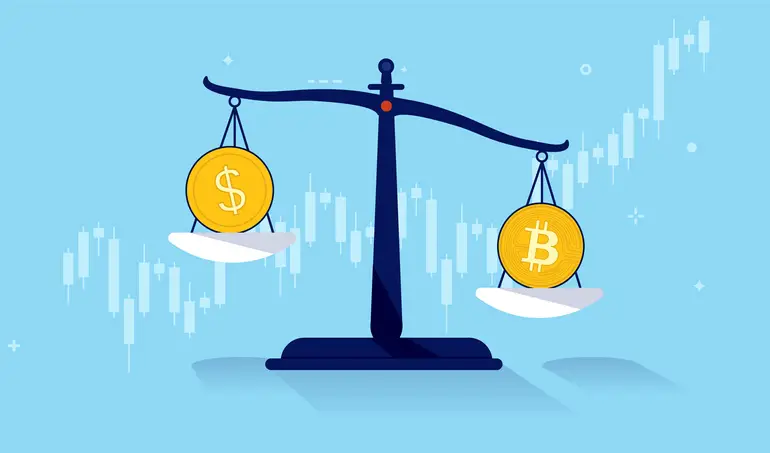Inflation is the gradual increase in the general price level of goods and services in an economy over time, resulting in a decrease in the purchasing power of money. In a world where traditional fiat currencies are increasingly susceptible to inflation, it is crucial to find alternative means to preserve the value of your capital. One such alternative that has emerged in recent years is cryptocurrencies, a form of digital currency that has the potential to safeguard your wealth against inflation. This article will explore various strategies for preserving capital during inflation using cryptocurrencies.
II. Understanding Cryptocurrencies
A. Definition of Cryptocurrencies
Cryptocurrencies are digital or virtual currencies that use cryptography for security and operate on a decentralized network called blockchain. Examples of cryptocurrencies include Bitcoin, Ethereum, and Litecoin.
B. Blockchain Technology
Blockchain is a decentralized ledger technology that records and verifies transactions without the need for a central authority. It enables cryptocurrencies to maintain a high level of security and transparency, reducing the risk of fraud and hacking.
C. Advantages of Cryptocurrencies
Some advantages of cryptocurrencies include their decentralized nature, which reduces the risk of centralization and government interference, lower transaction fees, and enhanced security measures. Additionally, cryptocurrencies can provide protection against inflation, as many of them have a finite supply or capped issuance rate.
III. Strategies for Preserving Capital during Inflation using Cryptocurrencies
A. Diversify your Cryptocurrency Portfolio
Diversification Benefits
To minimize the risk of losses and maximize potential gains, it is essential to diversify your cryptocurrency portfolio. This means investing in a variety of cryptocurrencies rather than concentrating your investments in just one or two digital assets.
Selecting Cryptocurrencies
When diversifying your cryptocurrency portfolio, consider factors such as market capitalization, liquidity, historical performance, and the underlying technology. Select a combination of established cryptocurrencies like Bitcoin and Ethereum, as well as promising altcoins with unique features or utility.
B. Hedge against Inflation with Stablecoins
Definition of Stablecoins
Stablecoins are a type of cryptocurrency that is pegged to a stable asset, such as fiat currency (e.g., USD) or commodities (e.g., gold), to minimize price volatility. Examples of stablecoins include Tether (USDT), USD Coin (USDC), and Paxos Standard (PAX).
Advantages of Stablecoins
During periods of inflation, stablecoins can serve as a safe haven for preserving your capital, as their value remains relatively stable compared to volatile cryptocurrencies. Additionally, they allow for easy conversion back into fiat currency when required, providing liquidity to your investments.
C. Invest in Cryptocurrency Index Funds
Definition of Cryptocurrency Index Funds
Cryptocurrency index funds are investment vehicles that track the performance of a basket of cryptocurrencies, providing investors with exposure to the overall cryptocurrency market without the need to manage individual investments.
Benefits of Cryptocurrency Index Funds
Investing in cryptocurrency index funds can be an effective way to mitigate risk and maintain a diversified portfolio. They offer the benefits of passive investing, lower fees compared to active management, and reduced potential for human error or bias.
D. Utilize Decentralized Finance (DeFi) Platforms
Definition of Decentralized Finance (DeFi)
Decentralized Finance, or DeFi, is an ecosystem of financial applications built on blockchain technology that enables users to access various financial services, such as lending, borrowing, and asset management, without intermediaries like banks or other traditional financial institutions.
Benefits of DeFi Platforms
By utilizing DeFi platforms, investors can earn passive income through staking, lending, and providing liquidity to decentralized exchanges. These income streams can help preserve capital during inflation, as the returns generated may outpace the rate of inflation. Furthermore, DeFi platforms often offer a higher degree of control and customization compared to traditional financial services, allowing investors to tailor their strategies according to their risk tolerance and financial goals.
E. Long-term Holding and Dollar-Cost Averaging
Long-term Holding
Long-term holding, or “HODLing,” refers to the strategy of purchasing and holding cryptocurrencies for an extended period, with the expectation that their value will appreciate over time. This approach can potentially mitigate the effects of short-term market fluctuations and provide long-term capital growth that outpaces inflation.
Dollar-Cost Averaging
Dollar-cost averaging (DCA) is an investment technique in which an investor divides the total amount to be invested across periodic purchases of a target asset, aiming to reduce the impact of market volatility on the overall purchase. By employing a DCA strategy, investors can mitigate the risk of making poorly timed lump-sum investments and accumulate cryptocurrencies at an average market price over time.
IV. Risks and Considerations
A. Volatility
Cryptocurrencies are known for their price volatility, which can result in substantial gains or losses. It is crucial to be prepared for this volatility and invest only what you can afford to lose.
B. Regulatory Risks
As the cryptocurrency market matures, governments and regulatory bodies are implementing new policies and regulations that could impact the value and usage of cryptocurrencies. Stay informed about these developments to minimize potential risks.
C. Security Risks
While cryptocurrencies offer enhanced security through cryptography and blockchain technology, they are not immune to hacking, phishing, and other cybersecurity threats. Protect your digital assets by implementing strong security measures, such as using hardware wallets, enabling two-factor authentication, and being cautious with online transactions.
D. Tax Implications
Many countries require reporting and taxation of cryptocurrency transactions, including capital gains and income generated from DeFi platforms. Consult with a tax professional to ensure compliance with your local regulations.
V. Conclusion
Inflation can erode the purchasing power of traditional fiat currencies, making it crucial for investors to seek alternative means of preserving their capital. Cryptocurrencies present a viable option for wealth preservation during inflation, thanks to their decentralized nature, finite supply, and potential for long-term appreciation. By adopting strategies such as diversification, investing in stablecoins, utilizing DeFi platforms, and employing long-term holding and dollar-cost averaging techniques, investors can mitigate the effects of inflation on their capital. However, it is essential to be aware of the risks and considerations associated with cryptocurrencies, including volatility, regulatory risks, security risks, and tax implications. By staying informed and adopting a disciplined approach, investors can successfully navigate the world of cryptocurrencies and protect their wealth against inflation.














